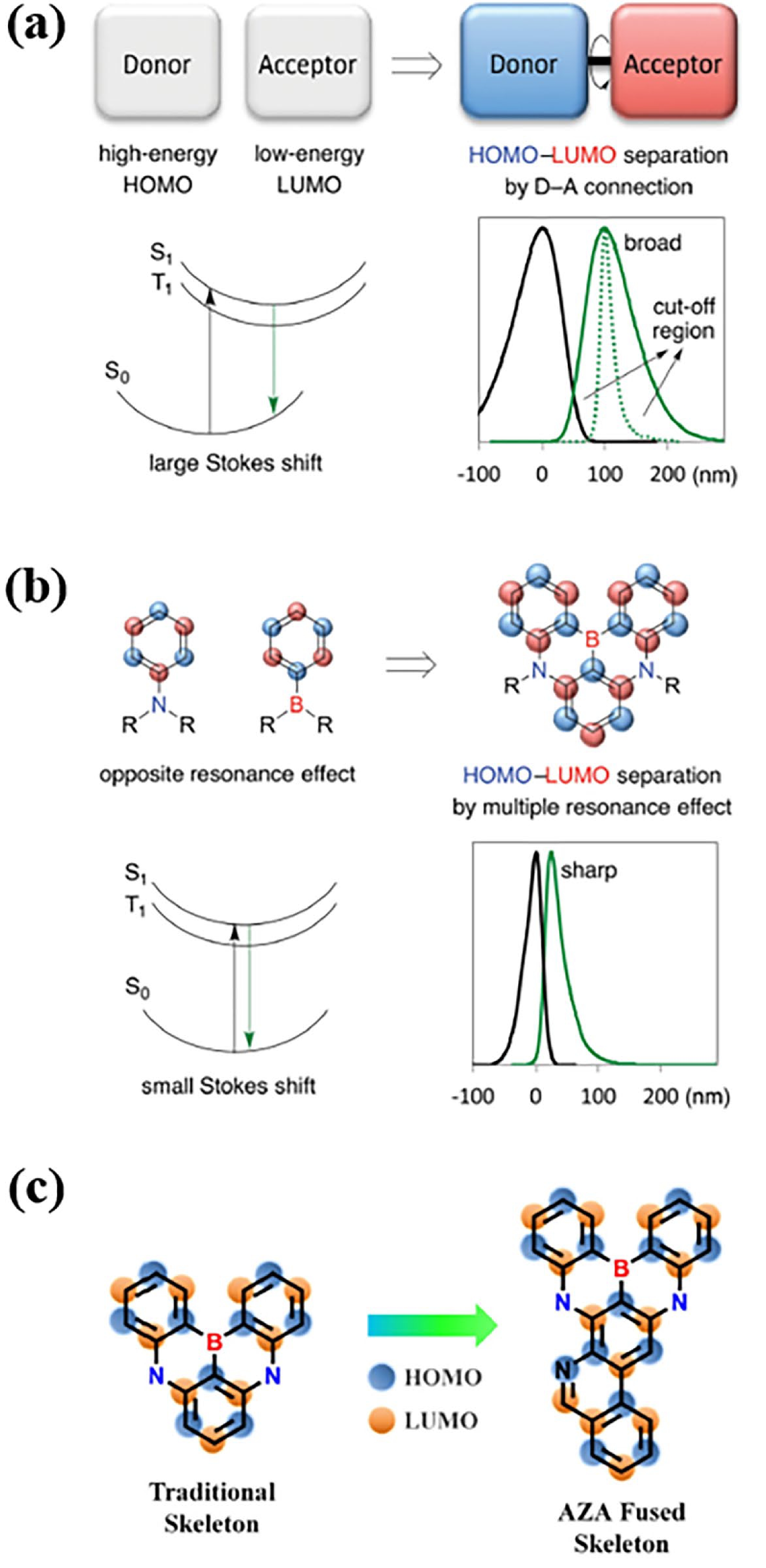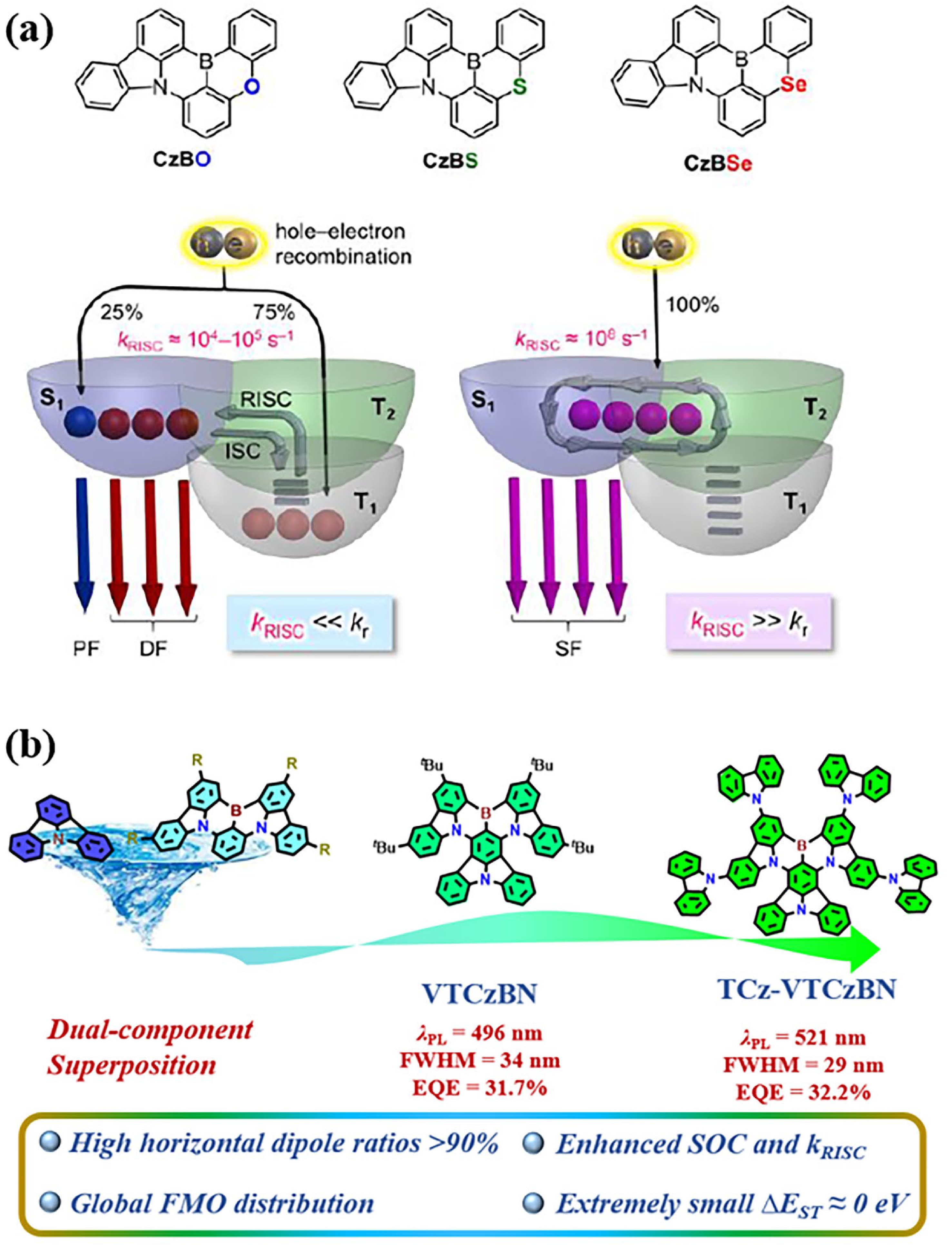| Citation: |
Xufeng Luo, Lixiu Zhang, Youxuan Zheng, Liming Ding. Improving reverse intersystem crossing of MR-TADF emitters for OLEDs[J]. Journal of Semiconductors, 2022, 43(11): 110202. doi: 10.1088/1674-4926/43/11/110202
****
X F Luo, L X Zhang, Y X Zheng, L M Ding. Improving reverse intersystem crossing of MR-TADF emitters for OLEDs[J]. J. Semicond, 2022, 43(11): 110202. doi: 10.1088/1674-4926/43/11/110202
|
Improving reverse intersystem crossing of MR-TADF emitters for OLEDs
DOI: 10.1088/1674-4926/43/11/110202
More Information
-
References
[1] Uoyama H, Goushi K, Shizu K, et al. Highly efficient organic light-emitting diodes from delayed fluorescence. Nature, 2012, 492, 234 doi: 10.1038/nature11687[2] Yang Z, Mao Z, Xie Z, et al. Recent advances in organic thermally activated delayed fluorescence materials. Chem Soc Rev, 2017, 46, 915 doi: 10.1039/C6CS00368K[3] Ren B, Zuo C, Sun Y, et al. Intramolecular spatial charge transfer enhances TADF efficiency. J Semicond, 2021, 42, 050201 doi: 10.1088/1674-4926/42/5/050201[4] Notsuka N, Nakanotani H, Noda H, et al. Observation of nonradiative deactivation behavior from singlet and triplet states of thermally activated delayed fluorescence emitters in solution. J Phys Chem Lett, 2020, 11, 562 doi: 10.1021/acs.jpclett.9b03302[5] Kaji H, Suzuki H, Fukushima T, et al. Purely organic electroluminescent material realizing 100% conversion from electricity to light. Nat Commun, 2015, 6, 8476 doi: 10.1038/ncomms9476[6] Hatakeyama T, Shiren K, Nakajima K, et al. Ultrapure blue thermally activated delayed fluorescence molecules: efficient HOMO-LUMO separation by the multiple resonance effect. Adv Mater, 2016, 28, 2777 doi: 10.1002/adma.201505491[7] Jung H, Kang S, Lee H, et al. High efficiency and long lifetime of a fluorescent blue-light emitter made of a pyrene core and optimized side groups. ACS Appl Mater Interfaces, 2018, 10, 30022 doi: 10.1021/acsami.8b09013[8] Yang M, Park I S, Yasuda T. Full-color, narrowband, and high-efficiency electroluminescence from boron and carbazole embedded polycyclic heteroaromatics. J Am Chem Soc, 2020, 142, 19468 doi: 10.1021/jacs.0c10081[9] Kondo Y, Yoshiura K, Kitera S, et al. Narrowband deep-blue organic light-emitting diode featuring an organoboron-based emitter. Nat Photonics, 2019, 13, 678 doi: 10.1038/s41566-019-0476-5[10] Chan C Y, Tanaka M, Lee Y T, et al. Stable pure-blue hyperfluorescence organic light-emitting diodes with high-efficiency and narrow emission. Nat Photonics, 2021, 15, 203 doi: 10.1038/s41566-020-00745-z[11] Zhang Y, Zhang D, Wei J, et al. Achieving pure green electroluminescence with CIEy of 0.69 and EQE of 28.2% from an aza-fused multi-resonance emitter. Angew Chem Int Ed, 2020, 59, 17499 doi: 10.1002/anie.202008264[12] Huang T, Wang Q, Xiao S, et al. Simultaneously enhanced reverse intersystem crossing and radiative decay in thermally activated delayed fluorophors with multiple through-space charge transfers. Angew Chem Int Ed, 2021, 60, 23771 doi: 10.1002/anie.202109041[13] Kim J U, Park I S, Chan C Y, et al. Nanosecond-time-scale delayed fluorescence molecule for deep-blue OLEDs with small efficiency rolloff. Nat Commun, 2020, 11, 1765 doi: 10.1038/s41467-020-15558-5[14] Nagata M, Min H, Watanabe E, et al. Fused-nonacyclic multi-resonance delayed fluorescence emitter based on ladder-thiaborin exhibiting narrowband sky-blue emission with accelerated reverse intersystem crossing. Angew Chem Int Ed, 2021, 60, 20280 doi: 10.1002/anie.202108283[15] Liu F, Cheng Z, Jiang Y, et al. Highly efficient asymmetric multiple resonance thermally activated delayed fluorescence emitter with EQE of 32.8% and extremely low efficiency roll-off. Angew Chem Int Ed, 2022, 61, e202116927 doi: 10.1002/anie.202116927[16] Park I S, Min H, Yasuda T. Ultrafast triplet-singlet exciton interconversion in narrowband blue organoboron emitters doped with heavy chalcogens. Angew Chem Int Ed, 2022, 61, e202205684 doi: 10.1002/ange.202205684[17] Luo X F, Ni H X, Ma H L, et al. Fused π-extended multiple-resonance induced thermally activated delayed fluorescence materials for high-efficiency and narrowband OLEDs with low efficiency roll-off. Adv Opt Mater, 2022, 10, 2102513 doi: 10.1002/adom.202102513[18] Luo X F, Song S Q, Ni H X, et al. Multiple-resonance-induced thermally activated delayed fluorescence materials based on indolo[3,2,1-jk]carbazole with an efficient and narrowband pure-green electroluminescence. Angew Chem Int Ed, 2022, in press doi: 10.1002/anie.202209984 -
Proportional views






 DownLoad:
DownLoad:















